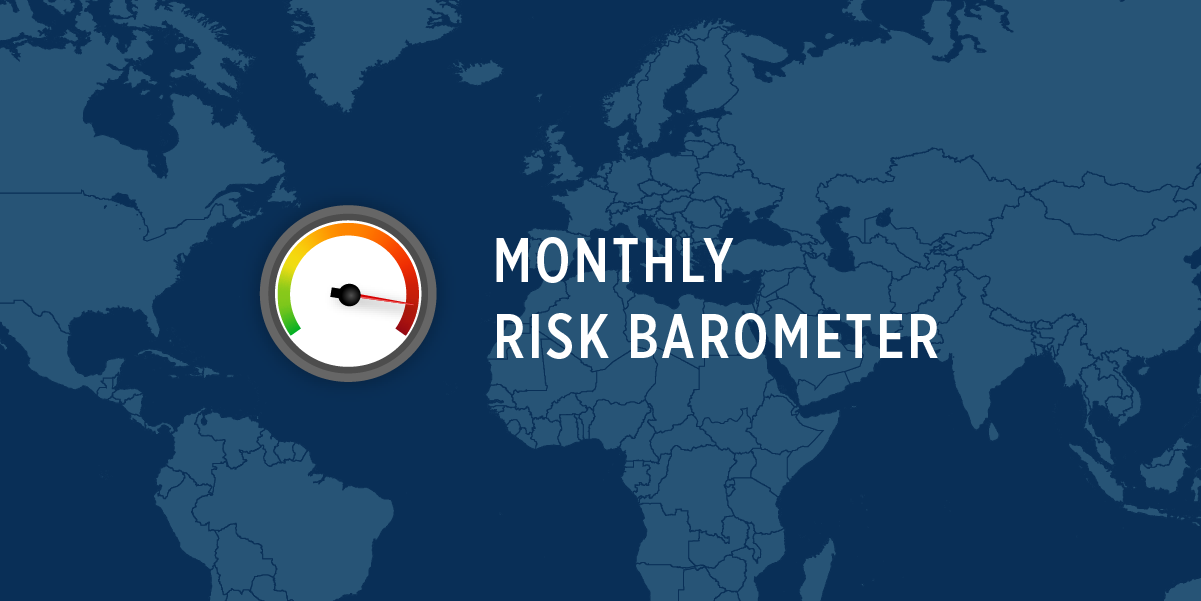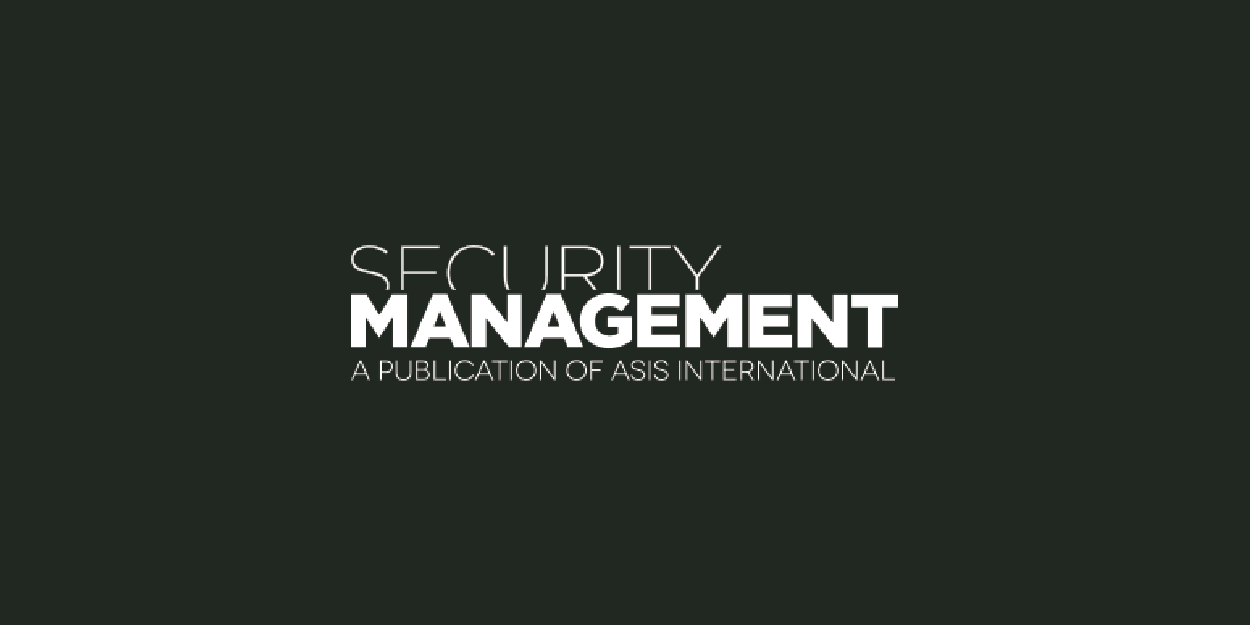In Global Guardian's monthly Risk Barometer, our Intelligence Team highlights current global hotspots with the potential to impact your business operations and travel. Read below for analysis on the threats we are closely monitoring this month and click here to subscribe for regular intelligence updates.
Vigilante Groups Rise Up in Haiti Despite Kenyan Police Deployment
The rise of self-defense groups in Haiti has emerged as a response to the general insecurity driven by rampant gang activity. Despite the recent deployment of some 1,000 Kenyan police, risks from violence, kidnapping, and extortion are increasing, particularly in the capital, Port-au-Prince, where some 95 gangs control 85% of the city.
Conditions have deteriorated to the point that Doctors Without Borders (MSF) suspended its activities in the capital on 19 November until further notice, due to several threats and attacks made against its patients and staff by police officers. Both the French and U.S. embassies closed for several days at the end of November due to violence. Since 11 November, at least 150 people have been killed, 92 others injured and some 20,000 more displaced in Port-au-Prince amid gang clashes, with gangs now controlling all the main roads in and out of the city. Flight operations at Port-au-Prince's international airport were suspended from 11 November, when gangs opened fire on a Spirit Airlines flight, until at least 11 December.
Context
In the last several months, the formation of self-defense groups has gained momentum as residents seek to reclaim their neighborhoods from gang control. These vigilante groups have emerged from communities that feel abandoned by state authorities and police forces, which have been unable or unwilling to provide adequate security. The "Bwa Kale" movement is one such example, characterized by vigilantism where community members take matters into their own hands against suspected gang members. Since April 2023, over 350 suspected gang members have reportedly been killed by vigilante mobs as communities react to the pervasive threat of violence, extortion, and kidnapping. On 19 November, at least 45 Viv Ansanm coalition gang members were killed in clashes with police and vigilantes in Pétion-Ville, Canapé Vert, Boudon, Route Frères, Christ-Roi, Poste Marchant and Delmas, Port-au-Prince, after the gang attempted to invade the area. Police continue to go after Viv Ansanm coalition leader Jimmy “Barbeque” Cherizier.
This situation is exacerbated by a political crisis that has left a power vacuum, allowing gangs to act with impunity. The United Nations Security Council has responded by deploying a Multinational Security Support (MSS) force, including Kenyan police officers, to assist Haitian National Police (PNH) in restoring order. However, this intervention has not yet significantly curbed the violence or improved security conditions on the ground.
The Mexican Autodefensa Playbook
The rise of self-defense groups in Haiti can be compared to the autodefensas that emerged in Mexico's Jalisco and Michoacán states around 2013. In both cases, local populations formed armed groups in response to the inability of state authorities to protect them from violent criminal organizations.
Similarities:
- Community Response: Both movements arose from communities facing severe threats from organized crime. In Mexico, autodefensas were formed primarily from lime and avocado farmers against drug cartels that terrorized local populations; similarly, Haitian self-defense groups are responding to gang violence and kidnappings.
- Vigilantism: Both phenomena involve elements of vigilantism where community members take up arms against perceived threats when state security forces are ineffective or corrupt.
- Political Vacuum: In both contexts, a lack of effective governance has allowed criminal organizations to flourish. In Mexico, corruption within law enforcement agencies often hindered effective responses to cartel violence; in Haiti, political instability has led to a similar breakdown of order.
Differences:
- Scale and Organization: The autodefensas in Mexico have evolved into more structured organizations with varying degrees of legitimacy and political influence. In contrast, Haitian self-defense groups are less organized and more spontaneous, driven primarily by immediate survival needs rather than long-term political objectives.
- Strong Personalities: The Mexican autodefensas grew on the backs of strong personalities such as Papa Smurf and Dr. Jose Manuel Mireles. Without similarly strong leaders, the Haitian vigilante groups may not be able to endure and effect change.
- Government Response: The Mexican government has at times co-opted autodefensas into official security structures, while in Haiti, the response has been more about external intervention (e.g., Kenyan police deployment) rather than integrating local self-defense efforts into formal security frameworks.
Gang Control and General Unrest
The pervasive control exerted by gangs over critical infrastructure such as ports and transport routes in Port-au-Prince further complicates the security landscape. Gangs have effectively taken control of main roads leading into and out of the city, collecting passage fees and creating an environment where travel is fraught with danger. This control extends to Toussaint L'Ouverture International Airport, which was temporarily closed due to gunfire incidents involving commercial flights.
The rise of self-defense groups is thus both a symptom and a response to this broader context of violence. As gang clashes continue—resulting in thousands of deaths and displacements—the formation of these groups reflects a desperate attempt by communities to assert control over their safety amidst widespread chaos.
Key Takeaways
- The emergence of self-defense groups in Haiti represents a critical juncture in the ongoing struggle against gang violence and state neglect. While these groups may offer temporary relief for some communities, their long-term effectiveness remains uncertain without comprehensive reforms addressing governance, police integrity, and socio-economic conditions that fuel such unrest.
- The comparison with Mexico's autodefensas highlights both potential pathways and pitfalls for these movements as they navigate complex dynamics of power, violence, and community resilience.
|
Risks Rise in Europe for Holidays
Growing jihadist threats, Russian hybrid warfare, and spillover from the conflict in the Middle East join extant domestic tensions in making Europe’s holiday season higher risk than normal. On 28 November, Germany’s Interior Minister Nancy Faeser called for “great vigilance” in the upcoming holiday season. Similarly, Canada recently updated travel advisories for five Western European countries, and at least 10 EU countries have announced temporary border restrictions for December and January, citing increased terror risk.
- Global Guardian recommends intelligence monitoring ahead of and during any planned trips to Europe this holiday season.
- We advise having contingency plans in place for sudden travel disruptions that could be caused by attacks, unrest, or sabotage.
- Avoid all protests and demonstrations as these can quickly escalate into violence in addition to constituting high-value targets for attacks.
Jihadism on the Rise
With the return of great power conflict, attention and resources have been shifted away from the War on Terror. But jihadist groups have the upper hand in multiple conflicts. On 27 November, the Al-Qaeda-linked Syrian rebel group Hayat Tahrir al-Sham (HTS) commenced an unexpected offensive against regime forces, rapidly capturing the government stronghold of Aleppo. In the Sahel, various jihadist groups, including Islamic State affiliates, have extended their territory in a series of victories over local security forces. Additionally, the Islamic State Khorasan branch (IS-K) has successfully conducted multiple attacks over the last year, including the attack on the Crocus City Hall in Moscow in March, which killed 145 people and wounded over 500 others.
Jihadist success in regional conflicts can facilitate and incentivize attacks in the West. Terror networks in Somalia, for example, have connections in Sweden and Italy, while networks in Burkina Faso and Mali have connections in France and Belgium. These groups see the holiday season in Europe as an opportunity to conduct symbolically valuable attacks on soft targets such as Christmas markets, religious services, and other large public gatherings. To that end, Islamic State chat rooms have been increasingly active with specific references to attacks during the holidays.
Russian Hybrid Warfare
Moscow perceives itself to be in existential competition with the West and has increasingly pursued the use of sabotage, assassinations, cyber war, and disinformation campaigns to create divides in European society, weakening its resistance to Russian influence and coercion. Russia’s current attempt to maximize its position in Ukraine ahead of likely negotiations is likely to translate into a higher rate of hybrid operations in Europe.
Spillover from the Conflict in the Middle East
The increased terror risk is partially attributable to spillover from the conflict in the Middle East. Widespread sympathy for Palestinians and condemnation of Israeli actions in Europe is in friction with the largely pro-Israeli policies of European governments. The intersection of the Israeli-Palestinian conflict with Jihadist narratives and the “legitimization” of targeting Europeans creates an environment highly conducive to lone-wolf terrorists. Russian disinformation campaigns have also exacerbated the polarization surrounding the Israel-Palestine conflict
Sentiments surrounding the conflict in the Middle East are highly polarized and have led to multiple—at times violent—confrontations between pro-Palestine protesters, European security forces, and pro-Israel protesters. On 08 November in Amsterdam, a series of provocative actions between Israeli Maccabi Tel Aviv fans and local Muslim and Arab residents culminated in a night of violence, leading to five hospitalizations and the evacuation of the Israeli fans. Dozens of pro-Palestine protests in Europe over the past year have escalated into violence as governments limit protest approvals over concerns of antisemitism.
Domestic Tensions
All the dynamics above contribute to extant domestic tensions manifest in increased unrest, political volatility, and the growing success of far-right and far-left parties across Europe. A combination of economic inequality, inflation, and demographic changes leave the continent charged for unrest. The triggers for this unrest are varied and difficult to predict. Recently, flooding in Spain, a stabbing attack in the UK, and a football match in the Netherlands have all instigated mass unrest.
Looking Forward
As threat vectors converge in Europe this holiday season the risks of conflict, terror, and destabilization are twofold. A flashpoint in any one of these domains—such as a terror attack or violent unrest—presents acute threats to travelers. But a flashpoint in one area also increases the risk of setting off a trigger in another. As the baseline risks for the continent continue to grow, all risk-multiplying events going forward—including the holiday season—are likely to be more dangerous than in years past.
Key Takeaways Convergent threat vectors in Europe make contingency planning more important than ever. The holiday season is a risk multiplier that increases the value of terror attacks, civil unrest, and hybrid warfare. |


















